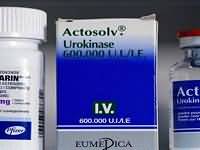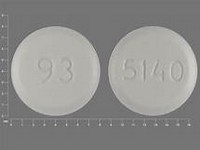Urokinase

CLINICAL USE
Fibrinolytic agent: Thrombosed arteriovenous shunts and intravenous cannulas Treatment of thromboembolic occlusive vascular disease, e.g. DVT, PE, peripheral vascular occlusionDOSE IN NORMAL RENAL FUNCTION
Lock: 5000–250 000 IU for 30 minutes – 2 hours Infusion: 5000–250 000 IU over 30 minutes – 48 hours, depending on local protocolPHARMACOKINETICS
DOSE IN RENAL IMPAIRMENT
GFR (mL/MIN)
DOSE IN PATIENTS UNDERGOING RENAL REPLACEMENT THERAPIES
IMPORTANT DRUG INTERACTIONS
Potentially hazardous interactions with other drugsADMINISTRATION
Reconstition
2 mL of sodium chloride 0.9%Route
–Rate of Administration
VariousComments
–OTHER INFORMATION
Doses from Kumwenda M, Cornall A, Corner L, et al. Urokinase for dysfunctional haemodialysis catheters. Br J Renal Med. 2005; 10(3): 10–11 Can also be given during dialysis Care in patients with uraemic coagulopathies or bleeding diatheses Some units mix 5000 IU with 1.5 mL heparin 1000 u/mL .
See how to identify renal failure stages according to GFR calculation
See how to diagnose irreversible renal disease
Home








